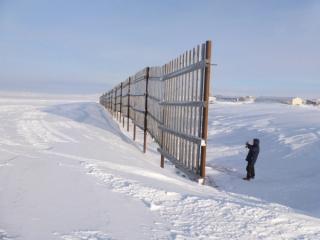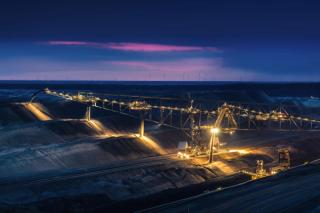
Cultural heritage: Indigenous and cultural heritage values driving sustainable development
by Flavia Kiperman
View post

This is Part 3 of a 3 part series. Click to read Part 1 and Part 2.
Some things are inevitable… death, taxes, and in the Arctic, being buried by snow.
Perhaps “inevitable” is a strong word. It is probable that, if your building is on the windward side of a community, it will accumulate significant snowdrifts around it.
In previous blogs we have explored local snow drifting around buildings and the considerations that need to be made for new subdivisions. But, as a lot of us have experienced firsthand, the snow problem isn’t always confined to just building facades. Significant snowdrifts can engulf entire streets or rows of homes, creating havoc for snow removal in addition to being a safety concern. For the past 40 years, across the Canadian Arctic, community snow fences have been a viable and well utilized solution. We are not talking about those little plastic snow fences you see along the side of the road in southern Canada; these northern structures are 3 to 5 metres tall and can extend for hundreds of metres.

So, how does a community decide to implement a snow fence to combat their snow drifting challenges?
The first step is to conduct a snow fence feasibility study. Using local meteorological data, topographical information, and input from the community foreman, this analysis examines various areas within the community. It focuses on their respective snowfall accumulation in comparison to a worst-case scenario, such as a completely exposed location in the heart of the tundra. This analysis would highlight community areas with significant accumulations and provide insight into what local features influence snow drifting conditions.
Once this baseline has been established, multiple fence scenarios can be considered to determine the potential reduction in snow removal efforts within the community. It should be noted, that when considering fence scenarios, factors such as terrain, proximity to the airport, surrounding infrastructure, recreation areas, traditional lands, and prevailing winds can influence the selection of locations. It is this kind of analysis that allows the community to compare the capital costs of fences versus the operational costs of snow removal.
If the community chooses to move forward with one of the scenarios, a site visit is conducted to consider to local topography along the approved fence lines. Typically, this takes two to three days and includes the expertise of a surveyor. This process encompasses the final layout of the snow fences and completion of the analysis, providing the comparison between current and future snow drifting conditions. From here, it is up to the community to decide on how they would like to proceed.
By thoughtfully considering the scientific insights, analyzing the benefits, and factoring in the community's unique needs, the implementation of snow fences emerges as a practical and highly effective solution for communities grappling with snow drifting challenges.

by Flavia Kiperman

by Jasper Schrijvers , Matthew Hoare

by Clodagh Connolly, Nicola Inge, Andres Schottlaender